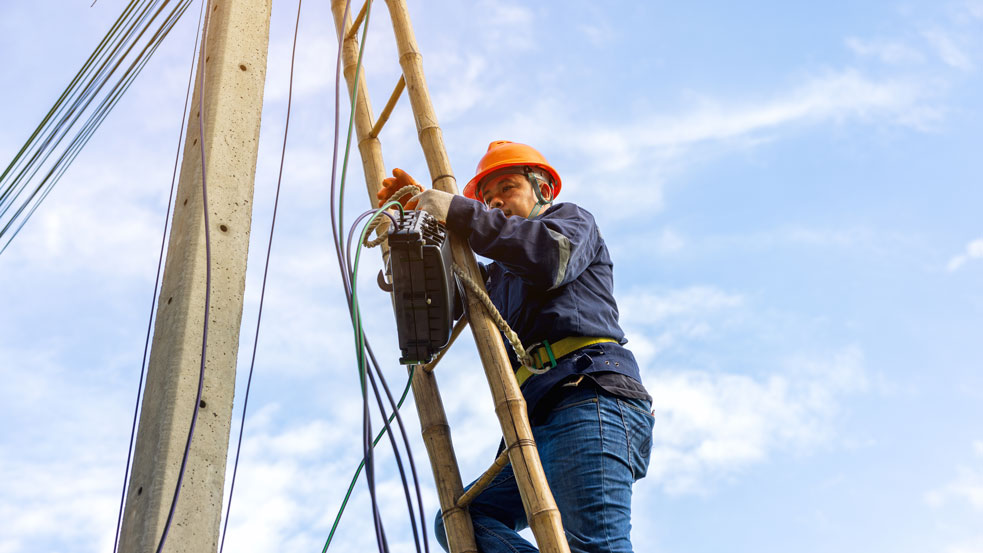Transforming the way the Ponca Tribe of Nebraska communicates with Lifesize
Overview
The Ponca Tribe of Nebraska is unique among federally recognized tribes in that there is no central reservation. Instead, the tribe has a 15-county service delivery area across Nebraska, Iowa and South Dakota, serviced by 6 office locations. While the majority of the Ponca Tribe’s 4,000+ members are located in these counties, there are tribal members located throughout the United States. Through these office locations, the Ponca Tribe offers a broad range of health, social, educational and cultural services to its members. In the interest of preserving community, promoting cultural and economic welfare, and streamlining services to members, the Ponca Tribe was looking for ways to bring these geographically dispersed office locations together.
Ten years ago, the Tribal Council chose Lifesize to power its communications between these office locations and bring about greater collaboration and community through the use of video conferencing. We spoke with Ponca Tribal Chairman Larry Wright Jr. and Hilary Farley, the Ponca Tribe’s IT Manager, to learn more about why they chose Lifesize and the impact of Lifesize service on the growth and development of the tribal organization.
Challenge
The Ponca Tribe of Nebraska was terminated by Congress in 1966, removing members from tribal rolls and dissolving their land and holdings. In 1990, the tribe regained recognition and was reinstated as a Federally Recognized Indian Tribe. However, they were not reallotted their previous land holdings, and instead, a service delivery area of 15 counties spread out through Nebraska, South Dakota, and Iowa was identified. These counties are diverse in population and resources, with counties being both urban and rural. This unique geography creates a challenge for the Ponca Tribe. Before Lifesize, staff were driving an average of 3.5 hours 1 way just to attend staff and tribal council meetings.
In the early 2000s, the tribe’s IT infrastructure was minimal and resources were limited. The Ponca Tribe discovered that they needed more than just a way to conduct remote conference calls. They needed a way to meaningfully connect their geographically dispersed office sites that was scalable, affordable, and easy to support and that offered the same universal interface to be used by staff and tribal members in not only their office locations but in communities around the country.
Solution
While attending the National Indian Education Conference in Seattle in 2006, Tribal Chairman Larry Wright Jr. was interested in learning how the Navajo tribe implemented their language program across their dispersed communities. At the time, the Navajo were using the legacy Lifesize record and share feature — and Wright wanted to see if that tool would work for his community.

“Even back in 2009, Lifesize seemed so streamlined and user-friendly compared to everything else out there.”
— Larry Wright Jr.
At first, other tribal members were skeptical about bringing on a brand new collaboration tool to their community, so we started small. In 2009, the tribe kicked off by purchasing one Lifesize Room system and two Lifesize Express Systems in three of the largest office locations. In the first year, the tribe saved over $80,000 in travel costs alone. In 2010, an additional Room and Express system was added to the two remaining office locations to completely connect all tribal office locations. In 2011, the chairman’s initial purpose for installing Lifesize was addressed, and the tribe purchased the Lifesize Video Center and Clearsea Servers. Now all Tribal Council Meetings were being recorded and broadcast to members across the country. In 2017 and 2018, as the need and usage of video conferencing grew, the tribe upgraded and moved all of their Lifesize systems, recording and streaming to the Lifesize Enterprise for Small Businesses cloud service.
The Ponca Tribe is now equipped with more than 11 Lifesize Icon conference room camera systems, has staff and members across Nebraska and the United States utilizing the mobile Lifesize app and has recently purchased five Lifesize Share devices. The Ponca Tribe is now looking forward to implementing the next big things from Lifesize into their community.
Outcome
Lifesize solutions have transformed how the organization communicates within its community and completely changed the dynamic of communication within the tribe. Since the community is growing, Farley now onboards new users on a weekly basis, with 80 current users enrolled. There are an average of 250 calls a month and higher productivy and communications within the tribe. Members from outside the service area and across the United States can now engage with tribal activities and serve on tribal committees and boards.
“With Lifesize, the community is at a level that it has never been before, and the presence of video has changed the stability of meetings completely…. We even require committee members to record and share their meetings now.”
In addition to intangible benefits, the tribe continues to save an estimated $80,000 per year on travel and mileage alone. Not only are staff and council members avid users of video conferencing, program leaders have also implemented Lifesize throughout several of their key community initiatives, such as their housing and economic development departments. Dedicated meeting spaces are created for every aspect of the tribe, including health care, gaming, committee meetings, staff meetings, human resources and more.
“I don’t have any hesitations about Lifesize, its use, and what it means to our tribe and maximizing those efficiencies.”



